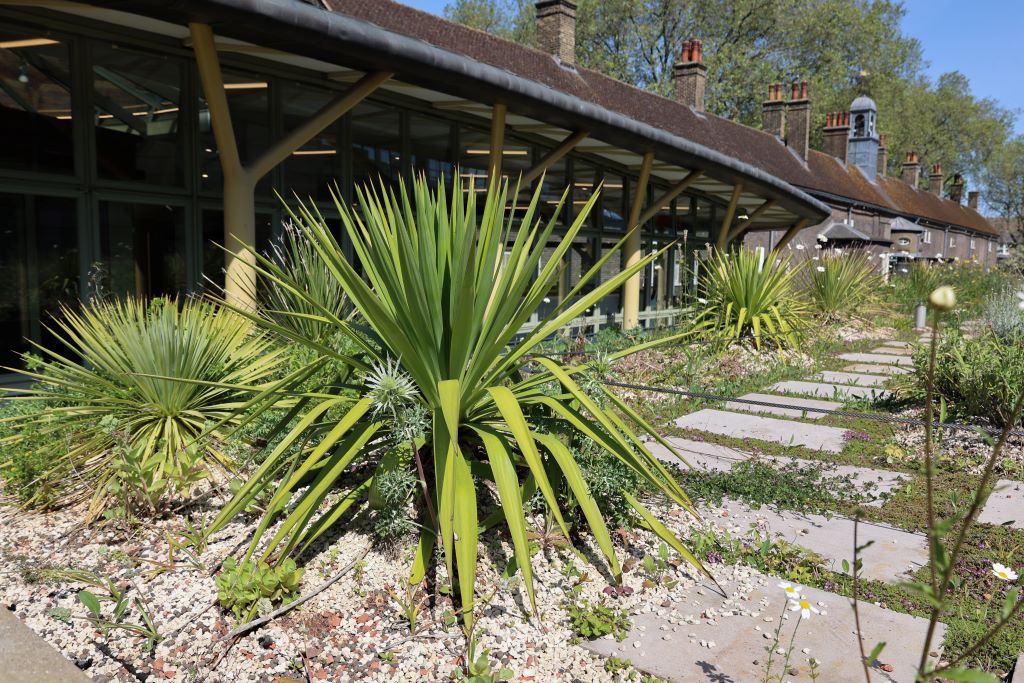Green roofs are becoming more popular. They keep the building cool in summer, soak up rainfall and encourage wildlife, creating a habitat in an otherwise barren space.
Though slow to catch on in Britain as pitched and sloping roofs are very common, around the world as cities grow and green space is lost to urban development, people are transforming the most underused part of a building.
Our roof garden is filled with plants that require little water and have shallow roots that can thrive in limited soil.
Designing the green roof
During our redesign, architects Wright and Wright identified the perfect spot for the 21st century extension to our Gardens Through Time, on top of our Studio. Inspired by Beth Chatto Gardens and the biosolar roof at Here East, the garden was developed with Head Gardener at the museum, Heather Stevens, and Dusty Gedge of the Green Infrastructure Consultancy Ltd.
Thanks to Dusty Gedge campaigning successfully for a living roof policy in London, ensuring all modern buildings have a green roof, there are now more than 290,000m2 of green roofs installed in central London – the equivalent to 1.26m2 of green roof per resident (2017 figures). This is higher than many other cities famed for their green roofs.
A green roof can create an important refuge for wildlife in urban areas, reduce the rate that rainfall leaves the roof, and improve air quality, filtering airborne particles and pollutants. It can also reduce the need for air conditioning in the summer and provide a degree of insulation in the winter. If you’re interested in creating your own green roof check out Dusty Gedge and John Little’s DIY guide.

Catmint and chives
Catmint and chives, Nepeta racemosa and Allium schoenoprasum, Photo Credit: Harriet Maxwell

Spoon flower and spanish daggar
Spoon flower and Spanish dagger, Dasylirion wheeleri and Yucca gloriosa, Photo Credit: Harriet Maxwell

Free digital guide
Explore Museum of the Home with our digital guide on Bloomberg Connects, the free arts and culture app.
